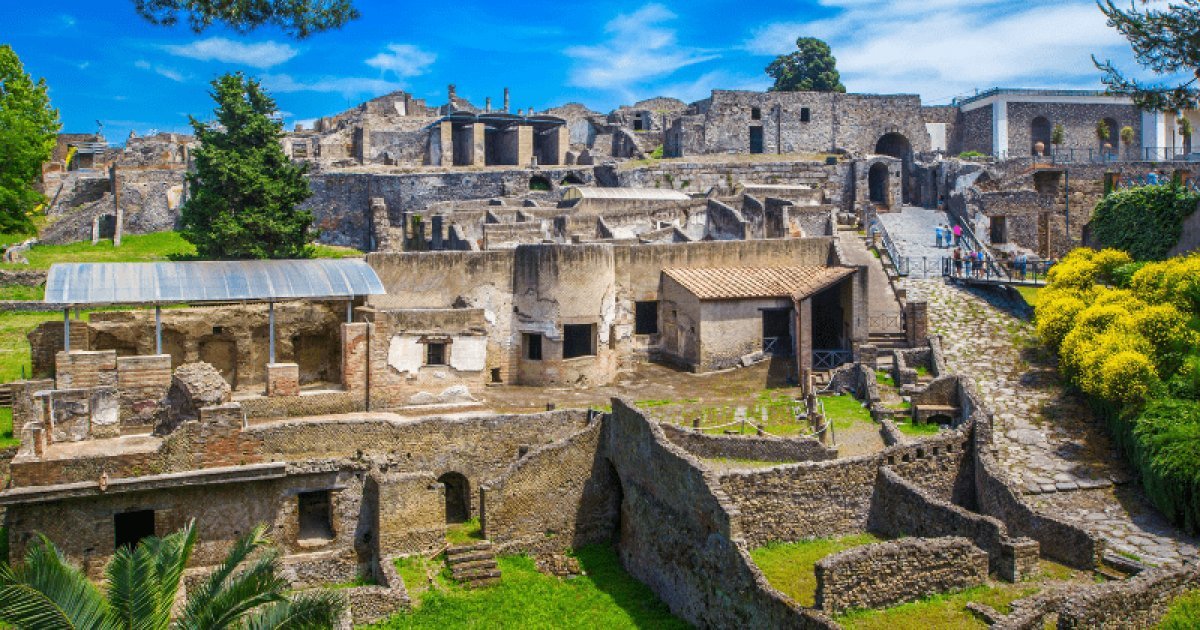POMPEI INTRODUCTION, The Roman Domus
 Language: English / USA
Language: English / USA
Before we start visiting the splendid dwellings found here in Pompeii, let me give you some general information on how the Roman domus were organized and some recurring terms you will encounter.
First of all, you should know that the earthquake of 62 AD had caused great changes in the city. In fact, many rich Romans had chosen to sell off their domus to wealthy freedmen, that is, former slaves, who had become enormously rich through trade and could afford the luxury of owning sumptuous mansions, splendidly decorated with frescoes.
You can discover many details about the style of these works by listening to the corresponding file.
Often, villas came about from the union, in a single property, of several domus, interconnected with the owner's workshops or with rooms used as storerooms. A striking example is the Garden House of Hercules, where no less than three houses were demolished to create a large garden where flowers were cultivated for the creation of perfumes that the landlord traded in.
Now let’s find out what the domus looked like inside.
Once through the entrance, you enter the atrium, a large space around which various rooms, including guest rooms, were arranged. All the bedrooms, called cubicles, were very small in order to heat them. The atrium in the center had an opening in the roof, the compluvium, which served to collect rainwater in the impluvium, a rectangular basin that opened in the floor. From here, the water was channeled into a cistern or, if in excess, drained into the street.
The Romans were very devoted to the patron gods of the family, the Lares, which is why an aedicule – a niche used as a small temple – always overlooked the atrium, where statuettes representing the household's patron deities were kept.
From the atrium, guests could be admitted to the tablinum, the master of the house's office, or to the exedra, a room where conversation took place, or to the triclinium, the elegant dining room where banquets were held and where diners ate comfortably reclining on triclinia, beds on which up to three people could sit.
From the atrium, a corridor led to the peristyle, a courtyard with a beautiful garden, surrounded by porticoes around which were the rooms reserved for family members.
Here’s an interesting fact: There were few windows and they were small and placed high up for fear of theft. In those days, there were no banks to deposit money and valuables, which were kept in safes at home.



